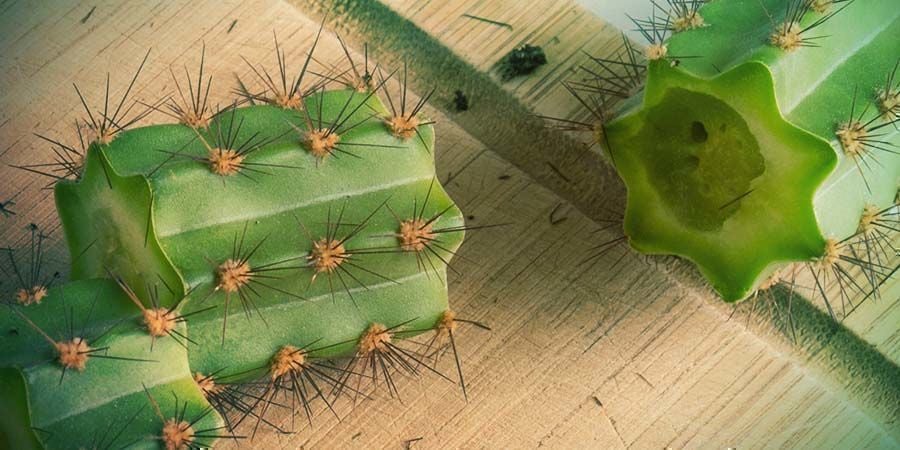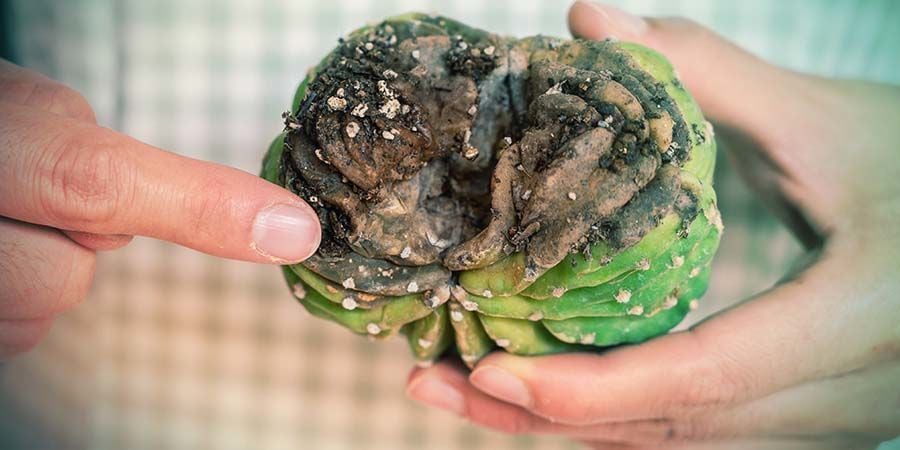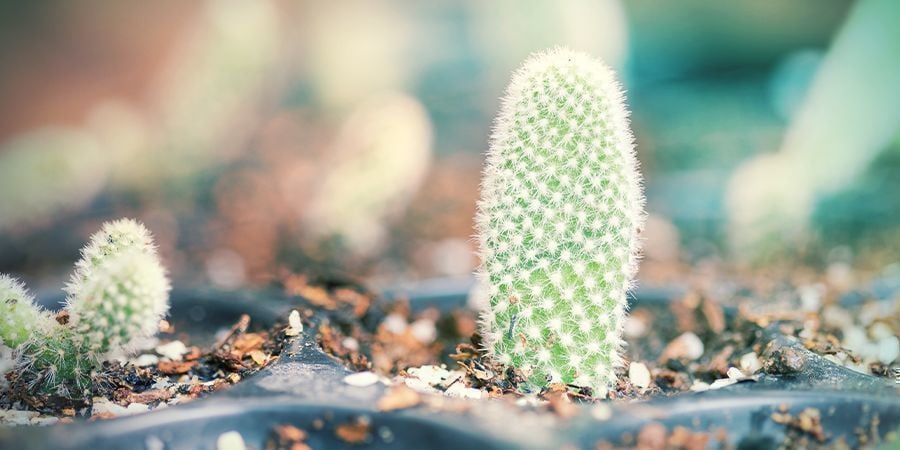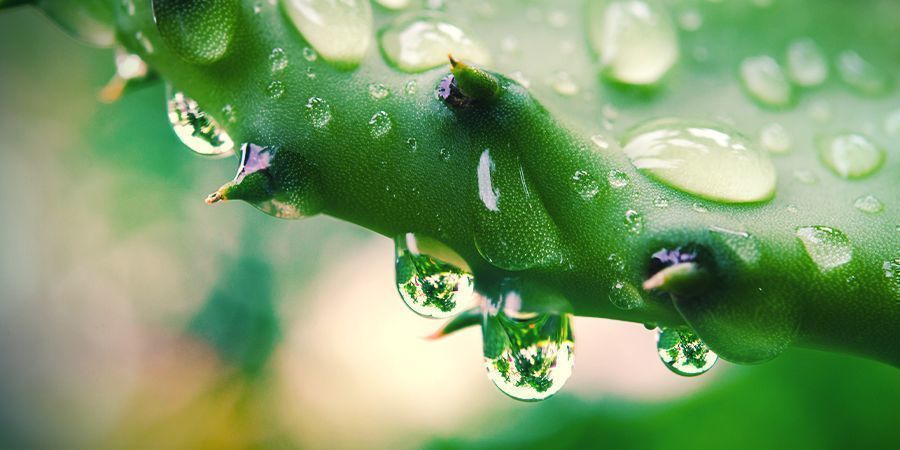How To Cultivate Cacti From Cuttings
If you want to grow mescaline cacti, you can do so from seed; but the more common (and faster) way is to propagate them from cuttings. Although rooting mescaline cacti cuttings is not too difficult, there are some things you should know to do it successfully.
With the following tips, you can successfully grow cacti from cuttings that you obtain from a store. From here, you can then grow more cacti from an established cactus that you have raised in a pot. Propagating from cuttings will work with most mescaline cacti such as the San Pedro (Echinopsis pachanoi), Peruvian torch (Echinopsis peruviana), Bolivian torch (Echinopsis lageniformis), Echinopsis macrogona (Trichocereus macrogonus), and most other columnar cacti.
OBTAINING CUTTINGS FROM AN ESTABLISHED CACTUS
To acquire cuttings from an existing cactus, you need a suitable specimen to cut from and a clean and sharp knife. Before putting knife to cactus, use rubbing alcohol to disinfect the blade and avoid introducing fungus and diseases. Disinfect the knife each time you perform a cut. Try to make a clean and steady cut, and do not crush the flesh of the cactus as you cut. A good size for a cactus cutting is about 10cm in length or a bit longer.
DRYING THE CUTTINGS

Before you do anything with your cactus cutting, it needs to dry at the cut ends and callous over. If the cutting is not dry enough, it can otherwise get infected with bacteria or fungus, causing it to rot. For drying, it is best if you expose your cutting to fresh outside air. Just make sure that your cutting isn’t placed anywhere with too much direct sunlight to avoid burning. Depending on the size of the cutting, it will take several days to a week for your cactus to dry and callous over. Do not plant a cutting that isn’t completely dry as this will likely cause it to rot.
WHAT IF YOUR CUTTING IS ROTTING?

It is not unusual for the ends of your cactus cuttings to turn a different colour as they dry. The ends may stay white, but they can also turn brown or black. This is okay as long as the colouration isn’t from mould or fungus. But if the ends are brownish or black and feel soft and mushy, it’s likely that the cutting wasn’t dry enough and got infected. If that’s the case, you need to act quickly: Use a disinfected knife and cut about 2cm away from the infected wound so that only healthy flesh remains. Then dry the cutting again.
When you buy cuttings from an online store, it is also possible that they can develop mould after spending several days in the mail on the way to you. No reason to panic; just use a clean cloth and wipe off the mould. If the ends have started to rot and are brown and mushy, use a disinfected knife and liberally cut off a couple or so centimetres above the bad parts so that only the healthy cactus flesh remains.
POTTING YOUR DRIED AND CALLOUSED CACTUS CUTTINGS

When your cuttings have dried and completely calloused over at the ends, they are ready for potting! You may be eager to start growing your mescaline cactus right away—if you want, you can now pot the cuttings.
Tip: If you don’t want to or can’t pot them right away, you can also store your dried cuttings. For storing, just keep them in a safe location, preferably outside exposed to fresh air. This way, you can keep them for weeks or even months. How long you can keep your dried cuttings may depend on some factors, however, such as humidity and temperature.
For potting your cactus cuttings, you want well-draining soil. You can get special succulent/cactus potting soil from any good garden store, but can also make your own cactus soil with sand and perlite. What you should not do is pot your cactus into universal garden soil. The reason for this is that these types of soils retain too much water. After all, cacti are desert plants and they like it dry. So make sure that you water only sparingly, and never when the soil is already moist.
PLACE YOUR CACTUS CUTTING INTO A SUITABLE CONTAINER
Take a medium-sized potting container (about 4–5l) and fill it halfway with dry soil. Place your dried cactus cutting into the container. Add another layer (about 6–8cm) of dry soil around the cutting in the container. Lightly pack the soil so the cactus doesn’t tip over in the pot; leave the soil airy and fluffy.
WATER ONLY SPARINGLY

Don’t start watering your freshly planted cutting right away, but wait a week or two. Keep in mind that your fresh cutting still doesn’t have roots, so it will not absorb much water, if at all. Your fresh cutting will be very sensitive to fungus and infection if the soil is too moist. Using a hand sprayer, only slightly mist the soil when it is dry every few days.
The best place for your mescaline cactus to grow is in a bright and dry place. Just make sure that your cactus-to-be isn’t exposed to direct sunlight until the roots have been established, which will normally take 4–6 weeks. After some months, you will see new growth from your newly potted cactus. At this point, when your new cactus has developed roots, you can now slowly increase the amount of sunlight your cactus is getting.
COMMON MISTAKES TO AVOID WHEN PROPAGATING A CACTUS
To root your cactus cutting successfully, make sure to avoid these common mistakes:
- Potting a cutting that is not completely dry
- Not using a well-draining cactus soil mix
- Using dirty/unsterilised tools
- Potting infected/rotting cuttings
- Watering when no roots are present
- Propagating in very high relative humidity
- Propagating during a heatwave or very cold temperatures
With the above tips, you should not have any trouble growing your own mescaline cacti from cuttings.
Happy growing!
-
 6 min
12 March 2025
How to grow and care for the San Pedro cactus
Growing plants is a very satisfying endeavour—even more so when they make you trip! Here, we'll look at how to grow San Pedro—an iconic psychoactive cactus—from seeds and cuttings.
6 min
12 March 2025
How to grow and care for the San Pedro cactus
Growing plants is a very satisfying endeavour—even more so when they make you trip! Here, we'll look at how to grow San Pedro—an iconic psychoactive cactus—from seeds and cuttings.
-
 5 min
27 November 2019
How To Grow Your Own Mescaline Cactus From Seed
Mescaline is a natural psychedelic produced by several types of cactus including peyote, San Pedro, and the Peruvian torch. These cacti are easy enough to grow, even if you don't have a lot of...
5 min
27 November 2019
How To Grow Your Own Mescaline Cactus From Seed
Mescaline is a natural psychedelic produced by several types of cactus including peyote, San Pedro, and the Peruvian torch. These cacti are easy enough to grow, even if you don't have a lot of...
-
 3 min
6 October 2018
Top 5 Mescaline Cacti
Mescaline occupies the esteemed podium of naturally occurring hallucinogens along with DMT and psilocybin. The alkaloid can be found in a variety of cactus species. Here are the top 5...
3 min
6 October 2018
Top 5 Mescaline Cacti
Mescaline occupies the esteemed podium of naturally occurring hallucinogens along with DMT and psilocybin. The alkaloid can be found in a variety of cactus species. Here are the top 5...














 United States
United States











